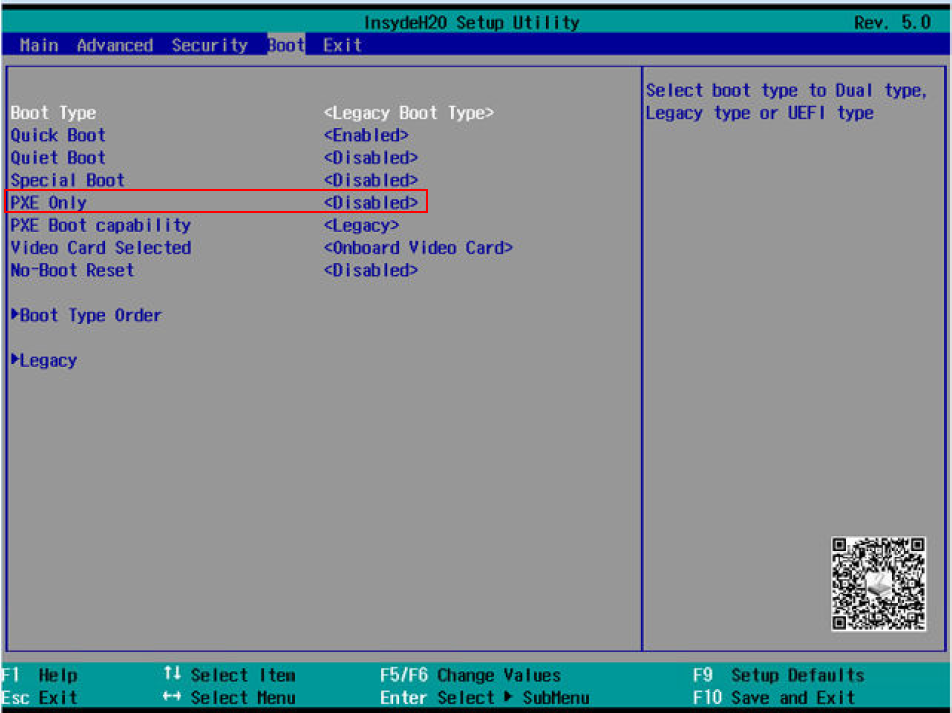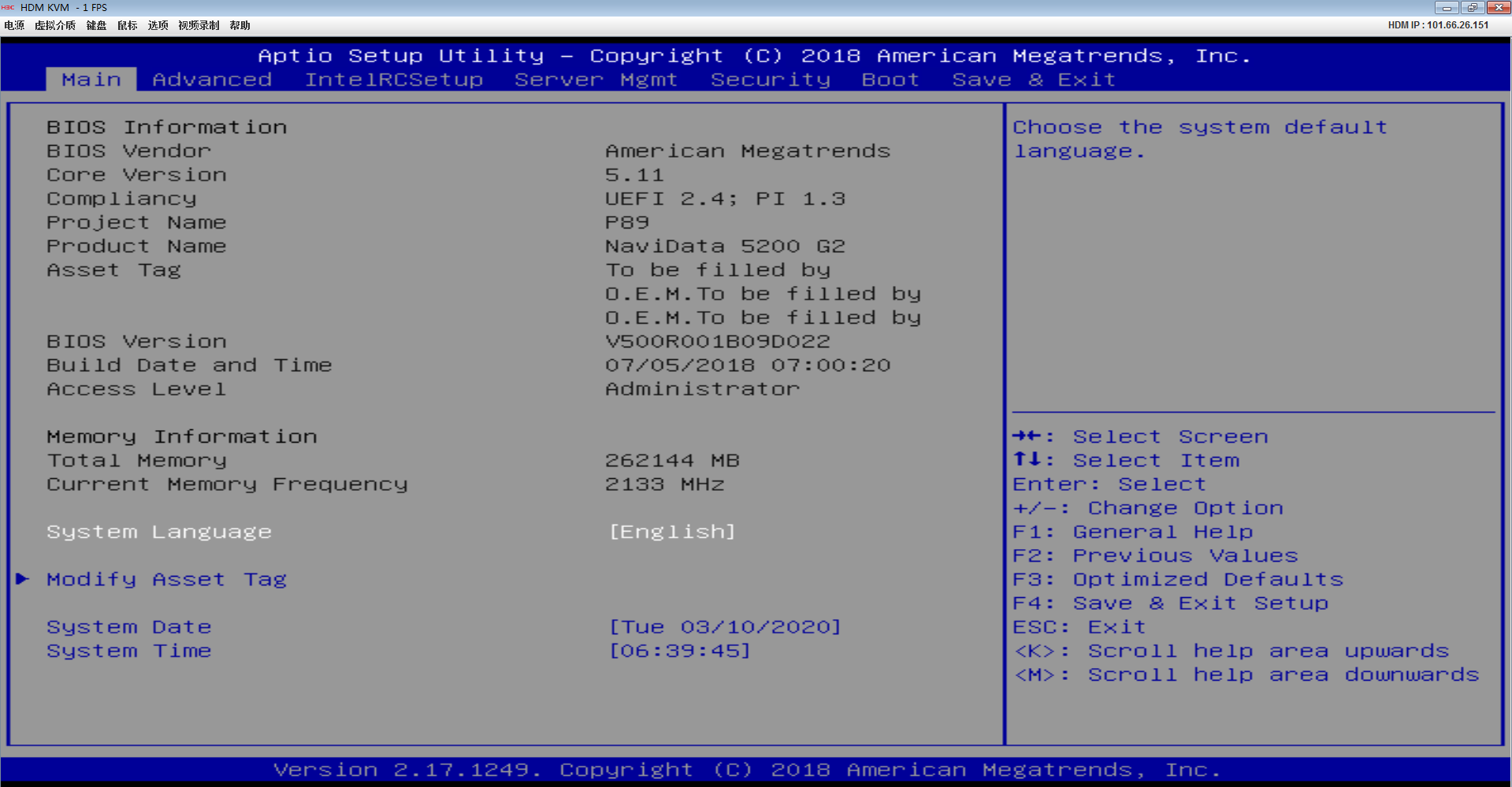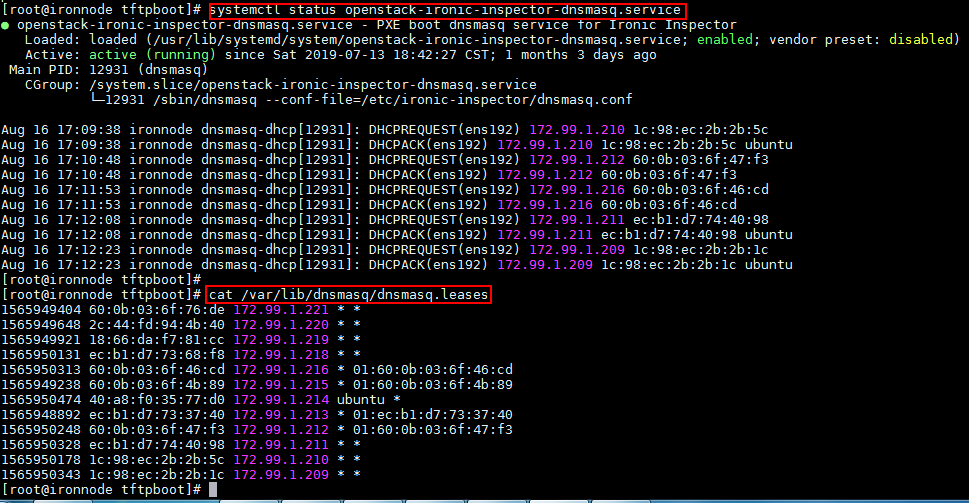Discovering nodes
Restrictions and guidelines
The NIC used for accessing the bare metal management network has enabled with PXE and configured with Legacy BIOS boot mode.
For some Huawei server models (such as RH2288H V3), you must set PXE Only to Disabled on the Boot page of the BIOS. If you fail to do so, the server enters device discovery phase after you restart the server.
Figure-1 Setting PXE Only to Disabled
For some SUGON server models, you must set Network Stack to Enabled in the BIOS and make sure the value for Ipv4 PXE support is Enabled.
Figure-2 Editing BIOS

During node discovery, start the remote console to verify that the server starts correctly. If the Setup page appears after the device starts as shown in 1, the device starts incorrectly. Contact related personnel to resolve the issue.
Figure-3 Setup page
Failure to obtain IP addresses through DHCP
Execute the following commands to verify that IP addresses are obtained through DHCP.
Figure-4 Verifying address allocation
Execute the following command on the compute node to verify that the node has received DHCP packets:
tcpdump -i ens192 -A 'udp and port 67 and port 68' -w /root/test.pcap
ens192 represents the NIC name discovered by the compute node. test.pcap represents the saved DHCP packet file name.
Use Ethereal or Wireshark to open the test.pcap file and verify that the PXE NIC has sent DHCP packets.
If DHCP services are normal but the compute node (DHCP server) does not receive packets sent by the server NIC, check the network configuration.
The server console prompts "No DHCP or proxyDHCP offers were received" during deployment
This issue is caused by insufficient IP addresses in the DHCP address pool. To resolve the issue:
Edit the value of the dhcp_range parameter in the /etc/ironic-inspector/dnsmasq.conf configuration file.
Execute the following command to restart the openstack-ironic-inspector-dnsmasq.service service:
systemctl restart openstack-ironic-inspector-dnsmasq.service
Disk data error occurs after node discovery
Whether the system can obtain hardware information correctly depends on the kernel driver of the image tool. The data might be incorrect if the RAID driver version in the image tool does not support the hardware device. To resolve the issue, re-create the image tool to support the RAID hardware device.


